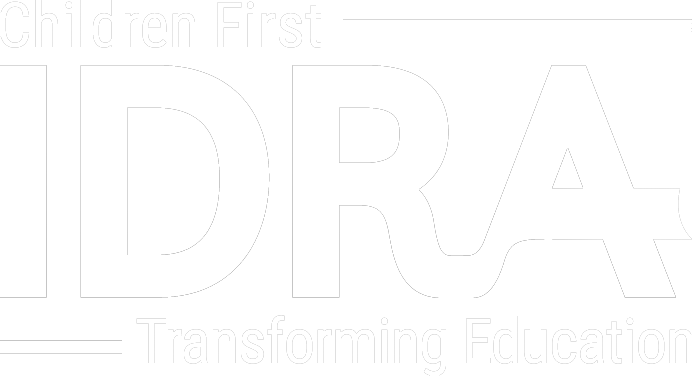• by Albert Cortez, Ph.D. and Anna Alicia Romero • IDRA Newsletter • November – December 1996 •




U.S. lawmakers recently waged a major battle over reforms of our national immigration policies. As a result of extensive pressure from California legislators, part of the national debate focused on immigrant student access to public education. This article provides an overview of the debates and the outcome for immigrant children.
The Education of Some Children is Threatened
Back in November 1994 California voters passed Proposition 187, making undocumented immigrants ineligible for public services in that state. Policy leaders in the US Congress saw this as a signal to propose restrictive laws against immigrants. Several bills affecting immigrants were making their way through the legislative process rather unsuccessfully. One such bill was introduced by Rep. Elton Gallegly (R-Calif.) that would give states the option of denying children of undocumented workers access to public schools and would call for citizen verification of students’ immigration status by school employees.
The Gallegly bill was postured as a “dis-incentive” for immigrants and their families to enter the country. The California legislator’s intent was to allow California – which has the greatest number of immigrant student enrollees within its schools – to legally deny admission to immigrant students residing in that state.
Opponents of the measure cited the US Supreme Court decision in Plyler vs. Doe in which the court had ruled that such exclusion violates the equal protection provisions of the US Constitution. Analysts concur that the Gallegly proposal was designed to force a revisiting of the Plyler decision in a court that many perceive is a conservative body, in hopes that the court would revise its position on the issue.
The debates about the education of children of undocumented workers were long and harsh. They caused some bitter divisions between members who re often aligned on other issues.
In Texas, Gov. George W. Bush Jr. spoke out against the measure by Gallegly because of the aftermath that would occur in Texas economically. Minority, religious and business groups also voiced strong opposition to the proposed measure on the basis of its immorality and the hurtful repercussions to the nation’s economy.
Last March, in an unprecedented move, Speaker of the House Newt Gingrich endorsed the amendment and strongly urged members of Congress to do the same. The national effort to curtail the number of undocumented workers in the United States was an issue couched in the argument that individual states have the right to determine how to control their borders and that immigrants are continually “reaping the benefits” of social programs for which taxpaying citizens must pay.
However, various groups spoke out against these claims and called attention to the measure’s longterm negative implications. Advocacy groups throughout the country like the Intercultural Development Research Association (IDRA), the Mexican American Legal Defense and Education Fund (MALDEF), National Association of Bilingual Educators (NABE) and many others began a campaign to disseminate information to other interested people on the Gallegly amendment and the unconstitutionality of the proposal (Cortez, 1996).
A broad range of other interest groups was also actively involved in the public debate on the issue. These included educator associations such as National Education Association (NEA), National Association of School Administrators (NASA), American Federation of Teachers (AFT), the Council of Chief State School Officers (CSSO) which is the national organization of state superintendents and commissioners, and law enforcement groups concerned with large numbers of schoolage youth “wandering the streets” with no place to go during the school day and denied admission to school.
Despite this broad range of opposition, the Gallegly amendment was passed by the House of Representatives by a vote of 257 to 163 (12 members not voting) (Congressional Record, 1996).
The senate version of the immigration legislation did not include the Gallegly measure. A conference committee was appointed to work out this and other differences in the two versions. Once a new version was created, both the House of Representatives and the Senate would have to vote to accept the changes before the bill would be sent to President Clinton.
In the Senate, many members had heard their constituents’ objections during the August recess and expressed serious reservations about denying children access to education, calling it a misguided way of attempting to control immigration. At one point during the conference committee deliberations, the conferees received a letter signed by 47 senators indicating that the senators would not support an immigration reform measure that denied education to immigrant children.
The president also communicated his grave concerns with the Gallegly provisions and stated that he would veto any measure that included denial of education to children.
Attempted Compromises
Faced with strong Senate opposition, proponents of the Gallegly amendment attempted to develop “compromises” that would make the measure palatable to enough members of the senate to win approval. One such compromise provided for grandfathering, or excluding children of undocumented workers who are already enrolled in schools. Another called for allowing such students to attend elementary schools but would require children to pay full tuition to attend high school. None of the variations on the original proposal produced sufficient changes of position by senators.
As opposition to the immigrant reform measure grew because of the Gallegly provisions, proponents of some of the broader reforms began to take issue with the student exclusion provisions. They complained that it was endangering passage of the broader bill and eventually eliminated the contentious education exclusion clauses from the final legislation.
Undeterred, Gallegly supporters won a concession to be allowed the opportunity to introduce the amendment as a separate bill before the end of the 104th Congress. The Gallegly measure was introduced, but not adopted, in the final days of the recently completed congressional session.
Other measures, some even more exclusionary, were introduced this year. Yet they did not receive the same high level of attention as did the Gallegly measure and were not passed by Congress.
What It All Means
These latest attempts to deny children of undocumented workers access to public schools is a continuation of efforts by organized groups that include Californiabased antiimmigrant factions and immigration reform proponents from around the country. While the latest attempt was defeated, it is likely that there will be future attempts to deny education to children of undocumented workers in national legislative proposals, and possibly in statefocused legislation.
Children’s advocates did not stand on the sidelines during the crucial congressional debates this year, and they made a difference in the defeat of the proposals. The general public began to understand that these proposals were more about excluding children from education than they were about reducing illegal immigration and saving taxpayer money. Individuals across the country voiced their disdain for such exclusion.
Since we will likely see similar proposals again and again, it would behoove us to deal with the larger issue. We must continue to create understanding among the general public about the issues at stake. We must dispel the many misconceptions surrounding the “rationale” offered by proponents of exclusion. The truth is that:
- There is no research data supporting the concept that denying children access to education will have any impact on immigration.
- Denial of a basic education punishes children for situations that they do not control.
- Research has shown that the majority of children of undocumented workers end up settling in the United States as adults, making access to education a critical longterm issue.
- The savings that some say are realized by keeping immigrant pupils out of school, when distributed among those currently enrolled, comes to a mere few dollars per school year and pennies per school day for each student. Funding issues attributed to immigrant pupil enrollment are often really a reflection of fundamental flaws in systems of state education funding.
Had the individuals and groups not staged organized and informed objections to the latest attack on immigrant children’s educational opportunities, it is conceivable that the restrictive proposals would have prevailed. If we allow legislators to deny access to education for some, then we take a step closer to allowing legislators to deny or dilute equity of access for any others perceived as different or “undeserving.” If any child is subject to injustice, we are all the poorer for it.
Resources
Congressional Record (Washington, D.C.: Government Printing Office, March 20, 1996).
Cortez, Albert. “Immigrant Education Policy: Why Attempt to Fix What’s Not Broken?” IDRA Newsletter (San Antonio, Texas: Intercultural Development Research Association, May 1996) Vol. XXIII, No. 5.
Albert Cortez is the division director of the IDRA Institute for Policy and Leadership. Anna Alicia Romero is an education assistant in the IDRA Institute for Policy and Leadership. Comments and questions may be sent via e-mail to feedback@idra.org.
[©1996, IDRA. This article originally appeared in the November – December 1996 IDRA Newsletter by the Intercultural Development Research Association. Permission to reproduce this article is granted provided the article is reprinted in its entirety and proper credit is given to IDRA and the author.]


